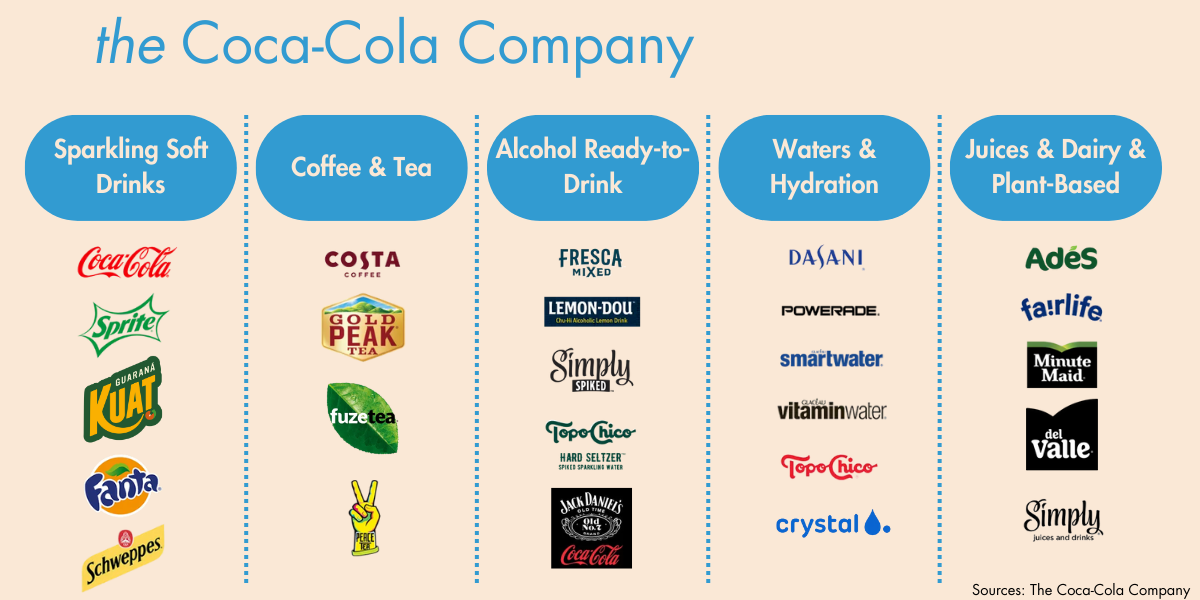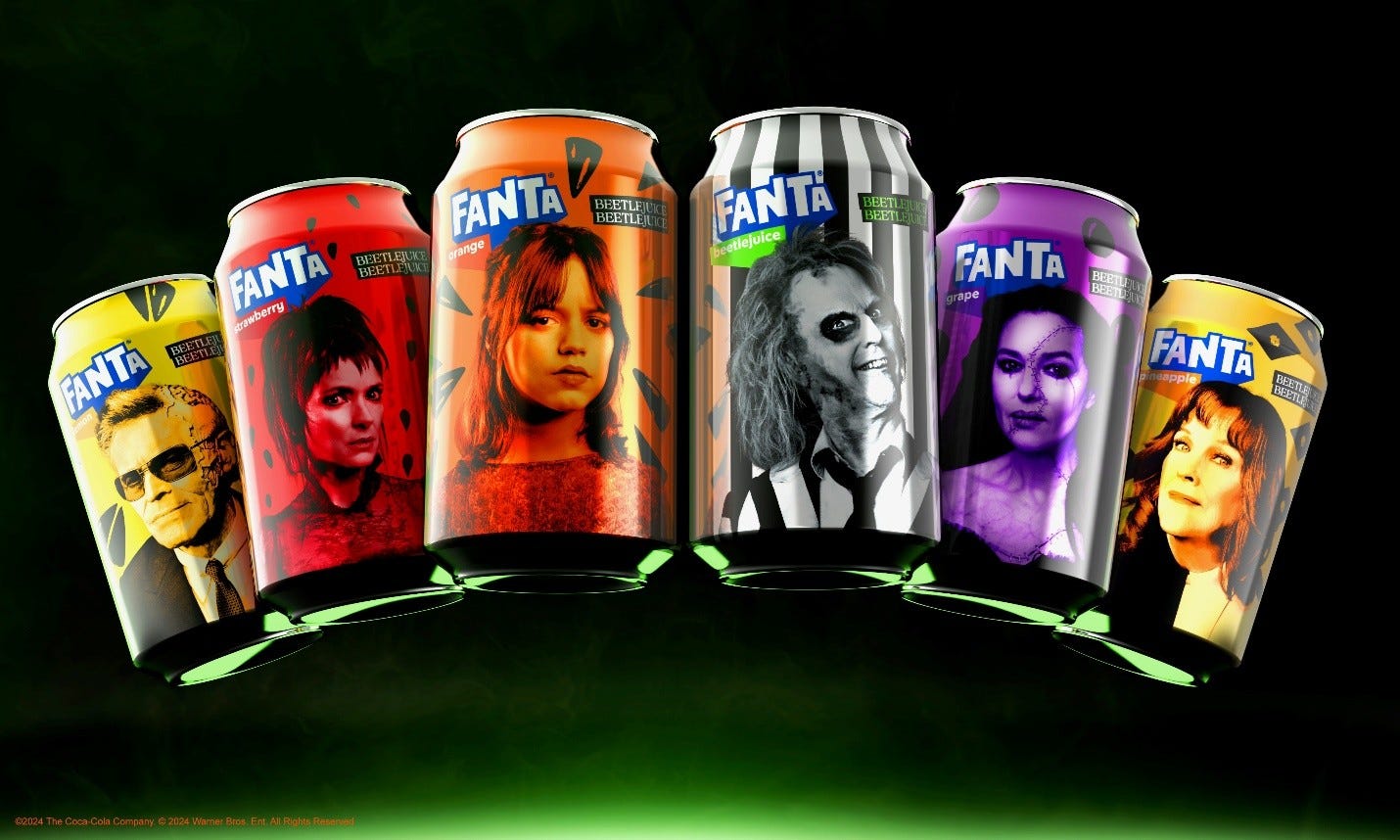Having briefly lived in Atlanta as a student, I’ve seen Coca-Cola’s influence up close. At Emory, where the business school is named after the company’s former CEO, Roberto Goizueta, the brand’s presence was impossible to ignore. Every year, students raise their glass for the traditional Coke Toast, a tribute to the city’s most iconic company. Walking through the Coca-Cola Museum, you can feel its global impact. Yet, for an omnipresent brand, I realized something recently—I hadn’t thought about Coca-Cola in years.
That changed when I heard its name on CNBC. The company had just released earnings, and the market was reacting positively. This made me wonder—why now? What is Coca-Cola doing to stay relevant in today’s rapidly changing world?
A Total Beverage Company:
Coca-Cola’s history began in 1886, but most people already know it, along with its notable reputation for great marketing campaigns, sponsoring every World Cup since 1950, increasing dividends for 62 consecutive years, among other achievements. Therefore, my focus will start in 2017. Why? Because that was the first time that the company referred to itself as a “Total Beverage Company”- a game-changing shift. According to Coca-Cola’s website:
“Becoming a Total Beverage Company means adding more drink options to our portfolio, which allows our fans to enjoy more of the drinks they want in the packages that suits their lifestyle. This includes adding flavored and sparkling waters, drinks with natural sweeteners, fewer ingredients, added nutritional benefits, less sugar, and bringing smaller package sizes into the market.”
This shift wasn’t just a branding exercise; it was a strategic response to declining soda consumption and growing consumer demand for healthier alternatives. Although the eponymous soda still generates a large portion of revenue (the company does not disclose revenue generation by brand), its other brands also deserve attention. In the following sections, I will explore how Coca-Cola is pivoting and adapting to key discussions today.
The paradox of globalization:
With rising geopolitical tensions, global companies are largely expected to be affected in different ways. In Coca-Cola’s case, I would argue that the company faces one main challenge: exchange rate fluctuations. Since almost 70% of its revenue comes from international markets, the company is highly exposed to currency movements. If the dollar strengthens relative to other currencies where the company sells drinks, Coca-Cola’s revenue – when converted back to dollars – will shrink in value. In other words, even if sales increase, total earnings measured in US dollars may not.
Consequently, there is a sweet spot between selling more drinks and the dollar’s value. For example, if Coca-Cola sells more drinks in Brazil but the Brazilian Real loses value, the revenue converted into US dollars will be worth less.
How about trade wars? Surprisingly, it is an issue that Coca-Cola can manage well. The company considers itself a profoundly local business, with drinks typically produced and sold within each country. This means tariffs on imported goods don’t significantly affect its operations. Paradoxically, local governments often counteract tariffs with subsidies to companies in the country, indirectly benefiting companies like Coca-Cola.
Mitigable and Manageable Issues:
I would argue that this also applies to concerns about U.S. politics. Two main political issues now that could create challenges for the company: aluminum tariffs and the appointment of Robert F. Kennedy Jr. (RFK) as the head of the Department of Health and Human Services.
Regarding the first, President Trump recently announced a 25% tariff on aluminum, which is used to produce beverage cans. However, in the most recent earnings announcement, James Quincey (current CEO of Coca-Cola), affirmed that although it is indeed an impact that would carry additional costs – the company will be able to adapt by adjusting its packaging strategy. That implies that we might see a shift toward more plastic and glass bottles.
However, it is important to note that the company has almost no stake in bottling – some independent partners do it for them (and consequently bear the bottling costs). This is called the Coca-Cola System and encompasses over “200 bottling partners across 950 production facilities”.
Regarding the latter, RFK is known for his criticism of certain consumer products and is expected to introduce obstacles to their consumption, such as a possible reform of the SNAP program (which helps low-income people buy nutritious food) to exclude unhealthy foods and sugary drinks from government subsidies. However, the Coca-Cola Company has been diligent for the past few years in its commitment to sugar reduction. As can be seen on the company’s website:
“We realize more consumers are looking for reduced- and no-added sugar drinks. We continue to innovate across our portfolio to deliver more beverage options with less added sugar and expand the availability of low- and no-sugar beverages.”
In 2023 alone, the company launched 250 reduced- and no-added sugar products. Thus, even if sugary beverages are restricted and obstructed, most of the portfolio brands have lower-calorie substitutes. Once again, Coca-Cola proves itself to be prepared to mitigate and manage risks associated with shifts in consumer behavior and regulation.
The ascension of GLP-1 and modern soda:
Unquestionably, consumer habits have changed throughout the years. Not only did people become more aware of obesity and its impacts, but GLP-1 medications as a solution for weight loss have surged in popularity. That created the emergence of a new beverage category: modern sodas.
For those unfamiliar with the new soft drink category, it is comprised of low sugar and naturally flavored healthy sodas, often with some additional health benefits such as gut health, vitamins, or nootropics. Walmart created a section for this category, which has been extremely popular with younger generations. The most popular brands in this market segment are Olipop (a prebiotic soda brand), which recently announced a $50 million funding round at a valuation of $1.85 billion, and Poppi, which spent $16 million on a 2025 Super Bowl advertising campaign.
The Coca-Cola Company has not yet entered this segment, but given its history of strategic acquisitions, it might not be long before it does so. According to the CEO of Olipop, both Coca-Cola and PepsiCo approached him in 2023 with acquisition proposals.
As of now, they are keeping up with this trend by investing in healthier drinking segments, such as coffee (purchasing Costa Coffee for $5.1 billion), milk (purchasing Fairlife for $980 million), and BodyArmor (purchasing for $5.6 billion). Its innovative spirit enables its resilience throughout different scenarios.
It is not the first time the company has overcome challenges and pleased its customers. One case of success that denotes that was the creation of Diet Coke in 1982. In the 1980s, health and fitness trends emerged, combined with the desire for low-calorie and sugar-free drinks. In response, the company created Diet Coke, to capitalize on that demand. This became one of the most important examples of Coca-Cola’s ability to ride the wave of consumer needs.
Pivoting through Innovation:
Another remarkable strategy Coca-Cola has been adopting to increase its revenue sources is making innovative bets. In the latest earnings release, the CEO confirmed that the company will continue pursuing original co-branding opportunities such as Fanta Beetlejuice and Oreo-flavored Coke, which contributed to top-line growth.
Source: The Coca-Cola Company
As far as brands go, Fairlife, together with Coca-Cola, has been leading sales. The brand, founded in 2012 and known as premium milk, achieved sales of $1 billion in 2022 — up 1,000% from reportedly $90 million in 2015. This success story serves as an exemplary case study: it demonstrates how Coca-Cola can thrive by effectively marketing and communicating with its customers and by staying on top of trends. Fairlife, with more protein per serving than regular milk, is a major draw for people who want to consume more protein, a major market trend today.
Another area of innovation that the company has been developing throughout the years is its investment in Artificial Intelligence (AI). Coca-Cola just announced a $1.1 billion partnership with Microsoft (from $250 million in 2020), which “will develop innovative generative AI use cases across various business functions.” What does this really mean for Coca-Cola’s future?
We still don’t know the details behind this partnership, but Coca-Cola has been tapping the AI space: it recently launched its first AI-generated advertisement, sparking controversial reactions. However, I think that the potential for AI in Coca-Cola’s operations extends far beyond marketing. Could AI-driven consumer insights help the company predict and respond to shifting beverage trends before they happen? Could supply chain optimizations powered by machine learning cut costs and increase efficiency? Could Coca-Cola eventually introduce AI-driven flavored customization?
Still, one key question remains: Will Microsoft’s AI advancements be exclusive to Coca-Cola, or will they be scalable solutions that competitors can access? If it’s the latter, will Coca-Cola still be able to maintain its competitive edge?
Be it the creation of Diet Coke or the acquisition of health-conscious brands, Coca-Cola’s journey is a testament to its resilience. Whether it’s shifting consumer preferences, geopolitical tensions, or industry disruptions, the company constantly proves its ability to evolve and thrive. The question isn’t whether Coca-Cola will evolve—but how far it will go to redefine itself once again.
Disclaimer: The information shared in this post is for informational purposes only and does not constitute investment advice. Please do your research or consult a professional before making any financial decisions. I may hold shares in the companies I discuss.
Sources:
Investor Relations :: The Coca-Cola Company (KO)
Aggregate consumer demand is still robust, says Coca-Cola CEO James Quincey
CEO of Coca-Cola, James Quincey | Full Q&A at The Oxford Union
2024 Q4 Earnings Release (Ex-99.1)
https://finance.yahoo.com/news/coke-7-billion-bet-milk-110047207.html
Walmart's Modern Soda shelf: The start of the functional beverage revolution
FAIRLIFE IS THE COCA-COLA COMPANY'S NEWEST BILLION DOLLAR RETAIL BRAND
The Coca-Cola Company Acquires Premium Alcohol Ready-to-Drink Brand in Australia
What is "total beverage company"? And how does it relate to Coca-Cola?
Olipop prebiotic soda valued at $1.85 billion in funding round
The Coca-Cola Company Acquires fairlife - fairlife Milk News
The Coca-Cola Company Quarterly report pursuant to Section 13 or 15(d)
https://goizueta.emory.edu/about/legacy
https://www.nbcnews.com/tech/innovation/coca-cola-causes-controversy-ai-made-ad-rcna180665
https://www.coca-colacompany.com/brands
https://www.coca-colacompany.com/media-center/fanta-invites-fans-to-manifest-halloween-thrills






